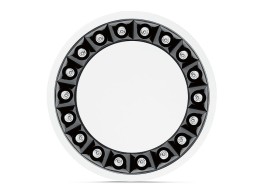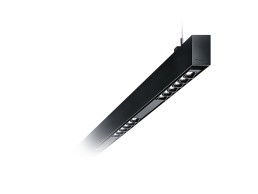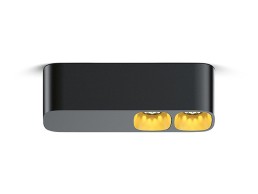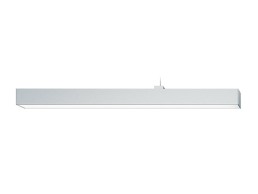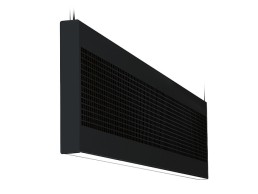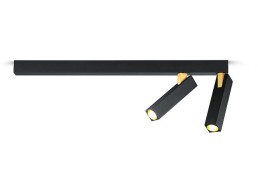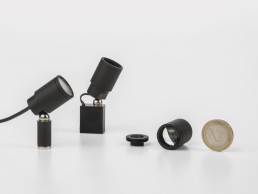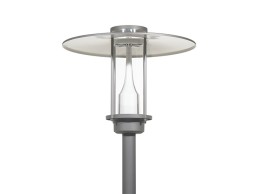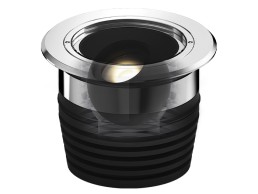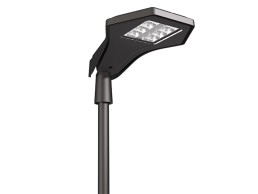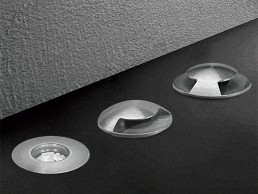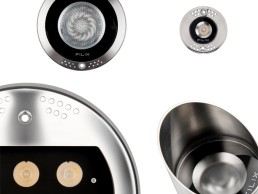iGuzzini Blade R
Featuring a circular form with a cross section of just 2cm and available in different dimensions and power ratings, the Blade R series extends the established Laser Blade XS range. Fully customisable in order to integrate perfectly into a given interior, it can be integrated with specially certified devices, including an emergency light, loudspeakers, cameras, multi-sensors and a smoke detector. Since Blade R also features a DALI Bluetooth interface with integrated beacon for smart light control and activation of smart services, this interior lighting also lives up to contemporary lifestyles.
Zumtobel Supersystem
This modular lighting system was developed to meet the high demands of architectural lighting. It offers a wide variety of lighting options from even surface lighting to accentuated lighting effects. The defining feature of the entire product family is its seamless linearity, regardless of whether Supersystem is used integrally as a single luminaire or installed on a track. In addition, it allows both horizontal and vertical installation.
XAL Livo
From recessed and surface-mounted spots, suspended luminaires and floor luminaires to insets for light tracks, the luminaire range showcases an overall harmonious language of form with rounded edges. All models allow a combination of black, white or gold coloured housings with reflector insets in black, white or gold. Different beam characteristics are available for the recessed and surface-mounted spots. An additional motion and brightness sensor enables adjusting the light intensity to match the ambient brightness.
Ribag Milum
Milum is a multifunctional lighting system with three combinable modules, which allow a wide variety of room lighting scenarios as lightline, downlight or wallwasher. The compact construction is made possible by technically sophisticated components, including double-focus lenses and free-form reflectors that ensure efficiency and precise light control. The light output sits slightly recessed in the slim profile and delivers a glare-free light. In combination with an excellent light brilliance, it achieves a high level of lighting comfort.
Lumenwerx Audia
This pendant luminaire was developed in collaboration with acoustic experts and combines a distinctive spatial effect with a sound-reducing surface structure. A patent-pending technology integrated into the body reduces sound by up to 30% over traditional PET acoustic luminaires. In addition, Audia also delivers a high level of lighting comfort. The easy-to-clean pendant luminaire is available in two sizes and various colours.
Wever & Ducré Mick
Inspired by the clear language of form of Bauhaus, these flexibly adjustable ceiling and wall lamps showcase geometric contours. Available in matte black as well as white, the slim powder-coated aluminium body of the luminaire is defined by a reduction to precisely worked edges and surfaces. Mick comes as a 330mm long version with an LED light source and as a 450mm long version featuring two light sources, with a brightness of 420 or 450lm each.
corporate friends C1-mini Series
The C1-mini series has expanded its product range with a modular zoom optic with a diameter of 16.5mm. It can be retrofitted to the existing spotlight family and can be optionally combined and supplemented with additional microstructure foils. Equipped with a glass lens, the beam angle can be freely adjusted between 6° - 33° with a variable height of approx. 21mm. The optical attachment is reduced to a minimum and also offers optimised anti-glare protection.
Siteco City Light Plus LED
The LED luminaire family interpret the form of the classic lanterns into a new and contemporary design. The result is an installation-friendly, modularly designed luminaire with an elegant, transparent impression and state-of-the-art, efficient lighting technology.
The glare-free, directed light distribution is generated via a precisely matched combination of high-performance LED arrays, 3-zone facetted reflectors and clear luminaire enclosures.
Available in three performance packages: Basic, Plus and Premium.
LightGraphix LD155
The new LD155 is an IP67-rated, high powered, adjustable uplight designed for internal and external use. The product features a new light engine giving more than 900lm output, and an innovative new ball joint design. This houses the LED, optics and accessories, allowing 360° rotation and 25° tilt adjustment in any direction. Quick on-site focussing is achieved with a removable inner bezel allowing all adjustments to be done from the front with no requirement to remove the product from the mounting surface.
3F Filippi Manta
Manta marks the first time in nearly 70 years that 3F Filippi has launched a luminaire for outdoor areas. Aerodynamically shaped in die-cast aluminium for low wind resistance, Manta is available in either pole or wall-mounted format. Suitable for all outdoor environments, from general lighting to work and roadway lighting, transit areas, building perimeters and parking lots, the IP66-rated Manta offers an output of 6800-22000lm at 3000K, with a CRI of >70.
Bright Special Lighting FAMA S
FAMA S steps 1 and 2, are made by extruded brass or stained steel IP-rated products, which meets the requirements of lighting design in outdoor areas. A choice of one side or double sided lighting emission offers appropriate solutions for a large number of lighting requirements. High efficiency, low maintenance costs, excellent colour rendering and efficient glare control make FAMA S the ideal solution for a wide variety of projects due to its extremely small size. A choice of lumen packages up to 230lm and flexible mounting options, make it ideally suited for open spaces and landscapes.
Filix Arpool Series
The new Arpool Series takes cue from the underwater lighting workshop and CPD seminars to implement technology that exalts the effect of light in water. Improved optical solutions, efficiency and design bring forward the light as one of the key features and value adders in hospitality and public pools alike and the projector versions make sure that water features get the same treatment.


